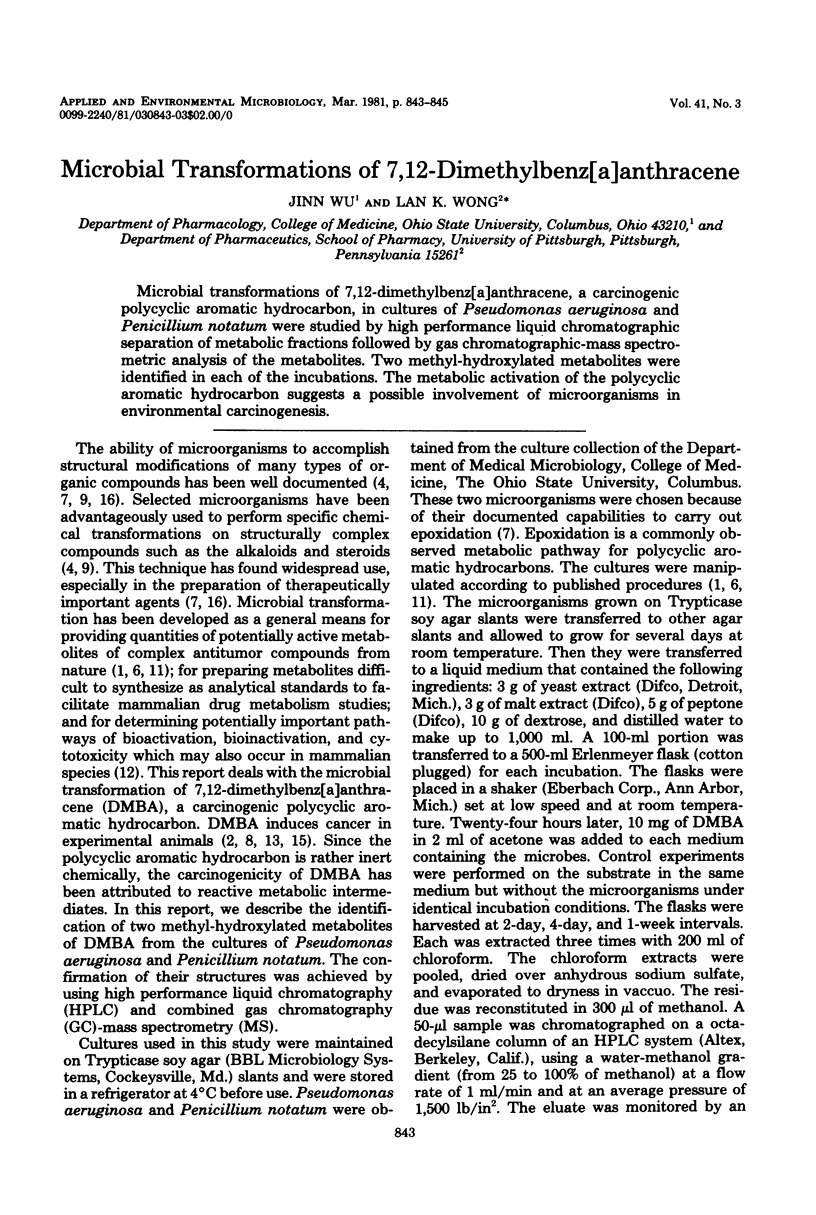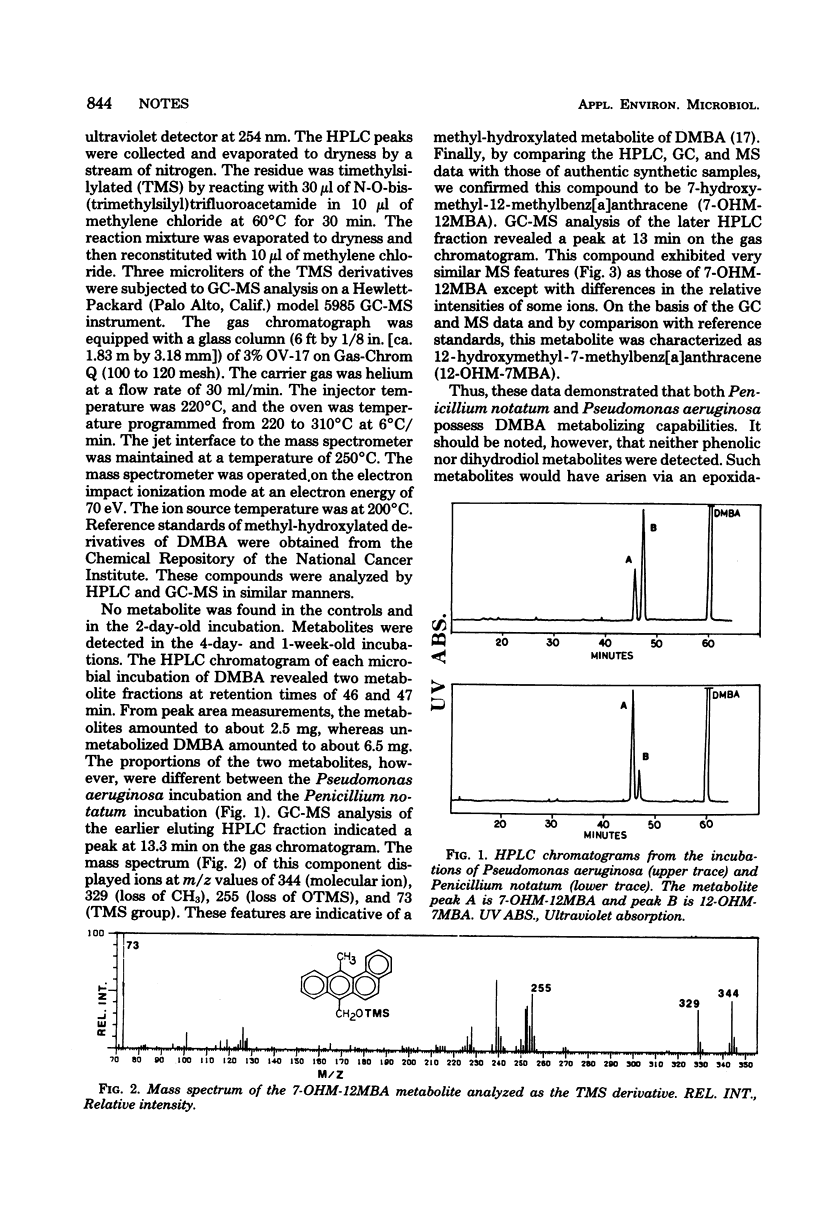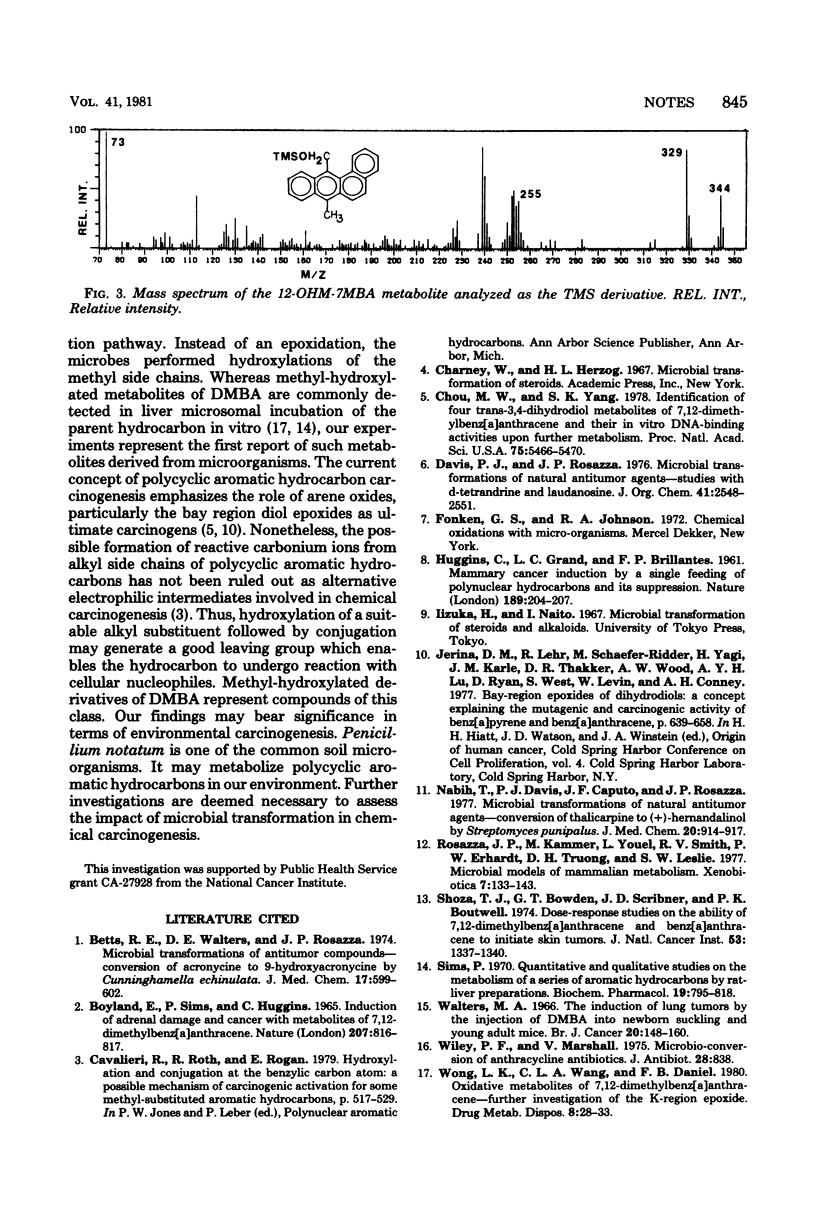Abstract
Microbial transformations of 7,12-dimethylbenz[a]anthracene, a carcinogenic polycyclic aromatic hydrocarbon, in cultures of Pseudomonas aeruginosa and Penicillium notatum were studied by high performance liquid chromatographic separation of metabolic fractions followed by gas chromatographic-mass spectrometric analysis of the metabolites. Two methyl-hydroxylated metabolites were identified in each of the incubations. The metabolic activation of the polycyclic aromatic hydrocarbon suggests a possible involvement of microorganisms in environmental carcinogenesis.
Full text
PDF


Selected References
These references are in PubMed. This may not be the complete list of references from this article.
- Betts R. E., Walters D. E., Rosazza J. P. Microbial transformations of antitumor compounds. 1. Conversion of acronycine to 9-hydroxyacronycine by Cunninghamella echinulata. J Med Chem. 1974 Jun;17(6):599–602. doi: 10.1021/jm00252a006. [DOI] [PubMed] [Google Scholar]
- Boyland E., Sims P., Huggins C. Induction of adrenal damage and cancer with metabolites of 7,12-dimethylbenz(a)anthracene. Nature. 1965 Aug 21;207(999):816–817. doi: 10.1038/207816b0. [DOI] [PubMed] [Google Scholar]
- Chou M. W., Yang S. K. Identification of four trans-3,4-dihydrodiol metabolites of 7,12-dimethylbenz[a]anthracene and their in vitro DNA-binding activities upon further metabolism. Proc Natl Acad Sci U S A. 1978 Nov;75(11):5466–5470. doi: 10.1073/pnas.75.11.5466. [DOI] [PMC free article] [PubMed] [Google Scholar]
- Davis P. J., Rosazza J. P. Microbial transformations of natural antitumor agents. 2. Studies with d-tetrandrine and laudanosine. J Org Chem. 1976 Jul 23;41(15):2548–2551. doi: 10.1021/jo00877a009. [DOI] [PubMed] [Google Scholar]
- HUGGINS C., GRAND L. C., BRILLANTES F. P. Mammary cancer induced by a single feeding of polymucular hydrocarbons, and its suppression. Nature. 1961 Jan 21;189:204–207. doi: 10.1038/189204a0. [DOI] [PubMed] [Google Scholar]
- Nabih T., Davis P. J., Caputo J. F., Rosazza J. P. Microbial transformations of natural antitumor agents. 3. Conversion of thalicarpine to (+)-hernandalinol by Streptomyces punipalus. J Med Chem. 1977 Jul;20(7):914–917. doi: 10.1021/jm00217a010. [DOI] [PubMed] [Google Scholar]
- Rosazza J. P., Kammer M., Youel L. Microbial models of mammalian metabolism O-demethylations of papaverine. Xenobiotica. 1977 Mar;7(3):133–143. doi: 10.3109/00498257709036245. [DOI] [PubMed] [Google Scholar]
- Sims P. Qualitative and quantitative studies on the metabolism of a series of aromatic hydrocarbons by rat-liver preparations. Biochem Pharmacol. 1970 Mar;19(3):795–818. doi: 10.1016/0006-2952(70)90243-1. [DOI] [PubMed] [Google Scholar]
- Slaga T. J., Bowden G. T., Scribner J. D., Boutwell R. K. Dose-response studies on the ability of 7,12-dimethylbenz(alpha)anthracene and benz(alpha)anthracene to initiate skin tumors. J Natl Cancer Inst. 1974 Nov;53(5):1337–1340. doi: 10.1093/jnci/53.5.1337. [DOI] [PubMed] [Google Scholar]
- Walters M. A. The induction of lung tumours by the injection of 9,10-dimethyl-1,2-benzanthracene (DMBA) into newborn suckling and young adult mice. A dose response study. Br J Cancer. 1966 Mar;20(1):148–160. doi: 10.1038/bjc.1966.17. [DOI] [PMC free article] [PubMed] [Google Scholar]
- Wiley P. F., Marshall V. P. Microbial conversion of anthracycline antibiotics. J Antibiot (Tokyo) 1975 Oct;28(10):838–840. doi: 10.7164/antibiotics.28.838. [DOI] [PubMed] [Google Scholar]
- Wong L. K., Wang C. L., Daniel F. B. Oxidative metabolites of 7,12-dimethylbenz[a]anthracene. Further investigation of the K-region epoxide. Drug Metab Dispos. 1980 Jan-Feb;8(1):28–33. [PubMed] [Google Scholar]


